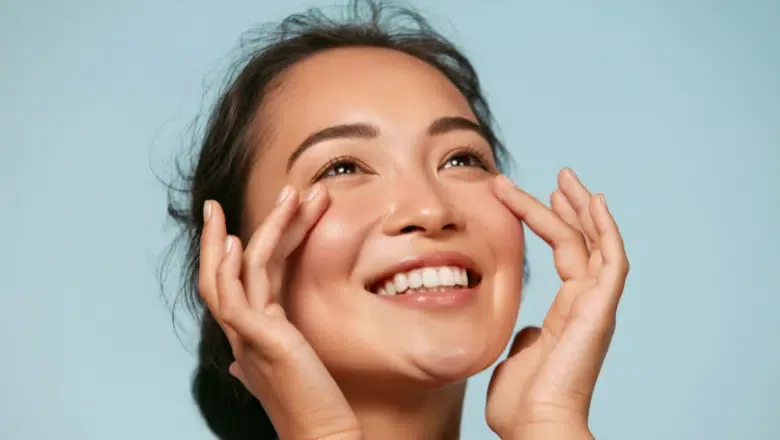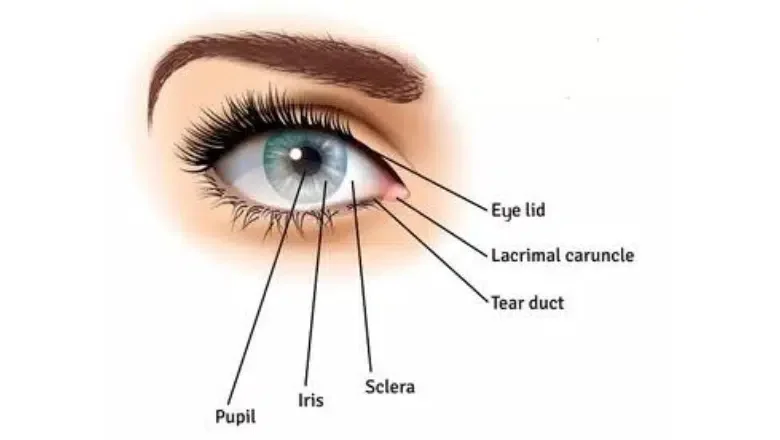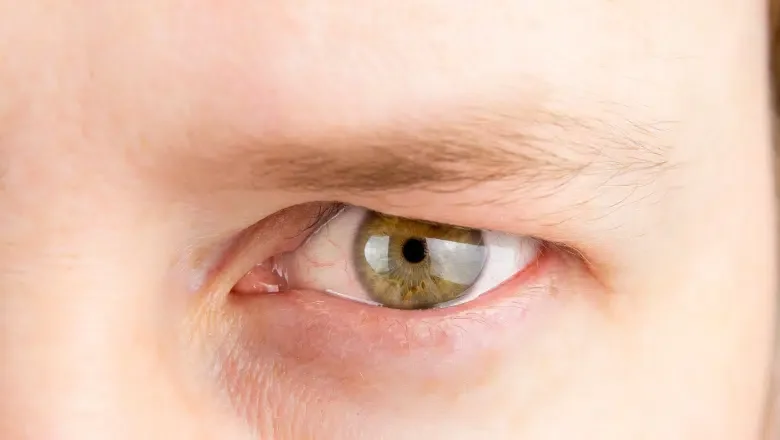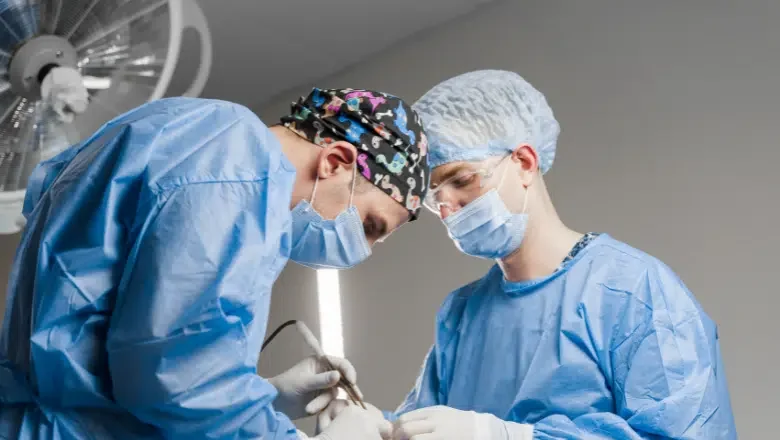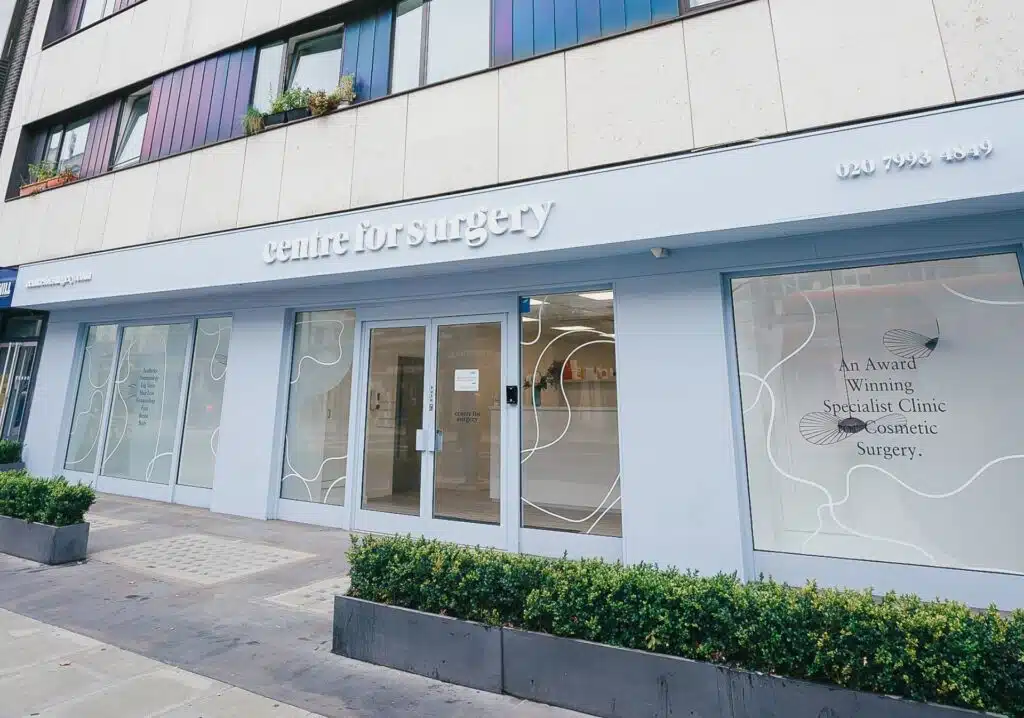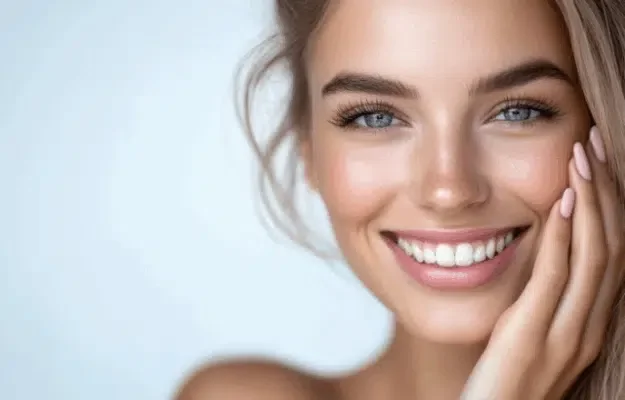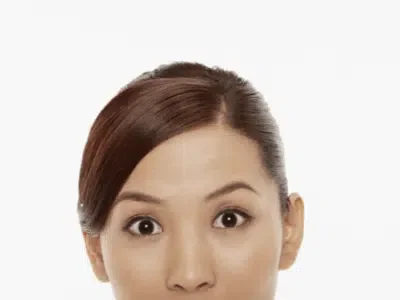Thinking About Eyelid Surgery or Blepharoplasty?
If you’re contemplating eyelid surgery, or blepharoplasty, or if you’re just gathering information, it’s vital to familiarise yourself with the anatomy of your eyelids and any concerns you may have regarding your eyes. This knowledge will ensure that you have the best possible outcome from your procedure. Our eyelids play a significant role as the protectors of our eyes.
As we age, our bodies undergo numerous changes, and our eyes are no different. A common ageing-related occurrence is the drooping of the eyelids. Apart from the evident cosmetic alterations that drooping eyelids bring, they can also significantly impact a person’s vision, even to the extent of limiting their field of view. The good news is that blepharoplasty offers a solution to these issues.
In the following sections, we’ll delve deeper into the structure of the eyelids and explain some of the commonly used terms associated with blepharoplasty. This should provide you with a clearer understanding of the procedure and its details.
Understanding the Anatomy of the Upper Eyelids
The structure of the eyes and eyelids is intricate and involves many muscles and various types of tissues. To help you better understand, we’ve broken down the anatomy of the upper eyelids into five categories, starting from the most superficial layer to the deepest:
Skin and subcutaneous tissue
The skin on your upper eyelid is extremely thin. As we age, this skin can become lax and cause drooping eyelids, a condition also known as ptosis.
Muscle
The muscle in your upper eyelid is known as the orbicularis oculi. It’s primarily responsible for the opening and closing of your eyes.
Orbital septum
This is a thin layer of dense connective tissue located beneath the muscle layer. It acts as a barrier, preventing the underlying fat and connective tissue from herniating forward and causing a bulging appearance.
Fat
The deepest layer consists of fat, specifically referred to as the “pre-aponeurotic fat pad”. This fat is located right beneath the orbital septum. Changes in the volume and distribution of this fat as we age can lead to aesthetic issues like puffiness or bags under the eyes.
Conjunctiva
This is a mucous membrane that covers the inner surface of your eyelids. When you flip your eyelid out, the pink part you see is the conjunctiva. It helps to lubricate the eye by producing mucus and tears.
Other Key Aspects of Eye and Eyelid Anatomy
The human eye is a complex organ with many parts, each serving its specific function. Below are some crucial parts of the eye and eyelid anatomy:
Pupil
The black central part of your eye. The pupil regulates light input by adjusting its size, becoming smaller in bright light and larger in low light.
Iris
This is the coloured part of your eye, which controls the amount of light that enters the eye by adjusting the size of the pupil.
Sclera
The white part of your eye. This tough, fibrous tissue extends from the cornea (the clear front surface of the eye) to the optic nerve at the back of the eye.
Tear ducts
These consist of small tubes that stretch from the eye into the nose. This structure allows tears to flow from the eye, providing lubrication and protection against infection.
Lacrimal caruncle
Also known as the caruncula lacrimalis, this small, pink, globular nodule can be seen in the inner corner of your eye. It contains oil and sweat glands and is responsible for the “sleep” or “eye crust” that forms at the corner of the eye.
Eyelid
The folds of skin, both upper and lower, that cover your eye when it is closed. The eyelids protect your eye from foreign bodies and light, distribute tears over the eyeball, and provide a barrier when necessary.
Conjunctiva
This is the red-pink mucosal membrane covering the inner part of your eyelids (the palpebrae) and eye socket. The conjunctiva also forms a clear coat that covers your sclera, helping to keep your eyes moist.
Palpebrae
This term refers to the inner surface of the eyelids, often used interchangeably with the term “eyelid.”
What Conditions Can Blepharoplasty Correct?
An eyelid lift, also known as blepharoplasty, is a popular cosmetic eye surgery. This procedure is typically performed to correct drooping or sagging eyelids. Depending on your specific needs, the surgery can be performed on your upper eyelids, lower eyelids, or in some cases, both. Additionally, the procedure can be performed on one side only or on both sides. There are a few main conditions that an eyelid lift can help address:
The first condition is known as blepharoptosis, which, in simpler terms, is droopy eyelids. This refers to a situation where the upper eyelid droops down, partially covering the eye. It’s often referred to as “hooding” of the upper eyelid. This condition can occur due to various reasons, but it’s usually because of an excess of skin and fat in the eyelids. If you have this condition, an upper eyelid lift (upper blepharoplasty) might be the recommended treatment.
Another common condition is known as dermatochalasis or, in everyday language, baggy eyelids. If you have this, your eyelids appear puffy due to extra skin, and it’s often linked with droopy eyelids. Puffy eyelids can occur as a result of certain medical conditions, but they can also be a natural outcome of getting older.
As we age, our skin loses its elasticity and becomes loose, resulting in various changes throughout our bodies, including the development of baggy eyelids. This is a common experience for many middle-aged and older individuals, regardless of gender. While excess skin is usually more visible in the upper eyelids, it can also affect the lower eyelids. An eyelid lift can help address this issue by removing excess skin, giving your eyes a more youthful and refreshed appearance.
Other Conditions Correctable with Eyelid Surgery
Ectropion and Entropion: Ectropion is a condition where the lower eyelid turns outwards, exposing the inner eyelid. It can cause dryness, irritation, and eye watering. On the other hand, entropion is when the lower eyelid turns inwards, causing the eyelashes to rub against the eye. Both conditions can be quite uncomfortable and can interfere with normal eye function. A lower blepharoplasty can help correct these issues.
Eye Bags: This condition is typically caused by fat protruding through the eyelids. It can make a person appear tired or old. A lower blepharoplasty can be done to remove or reposition the fat, improving the appearance of the under-eye area.
Periorbital Puffiness: This is a condition where there’s swelling or puffiness around the eyes, often due to ageing, fluid retention, allergies, or lack of sleep. In some cases, a blepharoplasty may be recommended to reduce this puffiness.
Periorbital Dark Circles: These are dark blemishes or discolouration around the eyes. In some cases, a blepharoplasty may help to reduce the appearance of dark circles, particularly if they’re due to shadows cast by puffy eyelids.
What Other Medical Conditions Can Affect the Eyelids?
Various other medical conditions can impact your eyelids and your general eye health. Here are some of them:
Conjunctivitis
Commonly known as pink eye, this condition is caused by a viral or bacterial infection, allergies, or eye injury. These can lead to inflammation of the conjunctiva, the clear outer layer of your eye.
A stye or hordeolum
This is a painful, red, pimple-like lump that can develop on your eyelid. It’s caused by an infection in an eyelash hair follicle. Although styes usually go away on their own, in persistent cases, surgical removal may be necessary.
RELATED: Eyelid Lumps and Bumps
Chalazion
This is a painless nodular lump on your eyelid caused by a clogged oil gland, which forms a nodule or granuloma. Chalazions can disappear on their own or with the use of certain medications, but in some cases, they may need to be surgically removed.
Xanthelasma
These are fat deposits on your eyelids. They typically appear in individuals with high cholesterol levels or thyroid disorders. Xanthelasmata can be removed with eyelid surgery, cryotherapy, laser ablation, or electrodissection.
Steatoblepharon
This is a condition where the deep eyelid fat pushes through the covering layer of the eye known as the orbital septum. This leads to baggy eyelids. It’s also referred to as “pre-aponeurotic fat prolapse”.
Double eyelid
This term is used to describe a type of blepharoptosis where excess skin and tissue cause multiple folds or creases in the eyelids.
Lateral hooding
This is another form of blepharoptosis where the eyelids droop to the point that they cover the outer parts of your eyes.
Uneven eyelids
When only one eyelid droops, it can cause an uneven appearance. This could be a result of a stroke, a facial nerve disorder like Bell’s palsy, or tics.
Blepharochalasis
This is inflammation of the eyelids that results in temporary swelling. Once the swelling subsides, it leaves behind excess skin and tissue.
Thyroid orbitopathy
This is an abnormal growth of tissue beneath the eyelids and is usually associated with Graves’ disease, a condition of the thyroid gland.
RELATED: Eyelid Lumps and Bumps
What causes droopy eyelids?
Droopy eyelids, also known as ptosis or blepharoptosis, is a condition in which the border of the upper eyelid falls to a lower position than normal. There can be various causes behind droopy eyelids, which include both congenital and acquired factors:
- Congenital ptosis: Some individuals are born with droopy eyelids. This happens due to the underdevelopment of the levator muscle, the muscle responsible for lifting the eyelid. Congenital ptosis often requires surgery to prevent amblyopia, also known as lazy eye.
- Ageing: The most common cause of droopy eyelids is ageing. As people get older, the tendons that lift the eyelids can stretch and weaken, resulting in the dropping of the eyelids. This is a form of acquired ptosis.
- Muscle diseases: Certain diseases that cause muscle weakness, such as myasthenia gravis or muscular dystrophy, can also lead to droopy eyelids.
- Nerve problems: Disorders that affect the nerves controlling the eyelid muscles, like Horner syndrome, a third nerve palsy, or a condition known as Bell’s palsy, can result in ptosis.
- Trauma: Any injury to the muscles or tendons responsible for lifting the eyelid can cause the lid to droop. This can happen due to trauma, surgical procedures, or excessive rubbing of the eyes.
- Tumours: Rarely, a growth or lump in the eyelid can cause it to droop.
- Refractive surgery: Some eye surgeries, particularly those that correct refractive errors like LASIK, can sometimes cause the eyelid to droop.
- Neurological conditions: Certain conditions like stroke or brain tumours can affect the nerves controlling the eyelid muscles, causing ptosis.
- Chronic medical conditions: Diseases like diabetes can sometimes lead to nerve damage that affects the eyelids.
How do I know if I need a Blepharoplasty?
Deciding whether you need a blepharoplasty, commonly known as an eyelid lift, is a personal decision that may be influenced by a range of factors. The primary reasons that lead people to consider this type of surgery typically involve physical discomfort or dissatisfaction with appearance due to changes in the eyelids. Here are some indicators that you might benefit from a blepharoplasty:
Aesthetic Concerns
If you are dissatisfied with the look of your eyelids, this could be a reason to consider blepharoplasty. Ageing, genetics, and lifestyle factors can lead to sagging, puffiness, or excess skin around your eyes, which might make you look older, tired, or unhappy even when you’re not.
Bags Under the Eyes
If you have persistent bags or dark circles under your eyes that make you appear tired or aged, a lower eyelid blepharoplasty could be beneficial. This procedure can remove or reposition fat pads under the eyes, smoothing out the under-eye area for a refreshed and rejuvenated appearance.
Impaired Vision
One of the most significant reasons to consider a blepharoplasty is if sagging skin from your upper eyelids is affecting your vision. When the upper eyelids droop significantly, they can block your peripheral vision or prevent your eyes from fully opening, which may lead to difficulty reading, driving, or performing other daily activities.
Eye Discomfort
Excessive skin around the eyes can also cause physical discomfort. You might experience irritation from your eyelashes rubbing against the skin of your drooping eyelids, or you might have trouble wearing glasses or contact lenses.
Blepharoplasty procedure
The procedure for eyelid surgery, also known as blepharoplasty, is performed at our clinic located on Baker Street and typically does not require an overnight stay.
RELATED: Eyelid Surgery FAQs – Q&A about Blepharoplasty
Here’s a step-by-step guide on how the blepharoplasty procedure is conducted:
Marking the Eyelids
Your surgeon starts by marking the areas on your eyelids where the incisions will be made. These markings guide the surgeon during the procedure, indicating the excess skin and fat to be removed.
Preparation and Sterilisation
Next, the surgeon will clean your eyelids with an antiseptic solution. This is an important step to reduce the risk of infection during and after surgery.
Administering Anaesthesia
The surgeon will then inject a local anaesthetic into the skin of your eyelids. This will numb the area and ensure that you feel no pain during the procedure.
Making the Incision
Once the anaesthesia has taken effect, the surgeon will make a precise incision along the markings. This is usually done along the natural lines and creases of your eyelids to minimise visible scarring.
Removing or Repositioning Tissues
The surgeon then removes the excess skin and, if necessary, fat or muscle. In some cases, the fat may be repositioned rather than removed to achieve a more natural and youthful look.
Closing the Incision
The surgeon will carefully stitch the incisions closed using very fine sutures. These sutures help to reduce the visibility of any post-surgical scarring.
RELATED: What Does Eyelid Surgery Involve?
Can I get Blepharoplasty surgery on the NHS?
The National Health Service (NHS) in the UK does offer blepharoplasty, but only under very limited and specific circumstances. Typically, this procedure is considered cosmetic and is therefore not usually covered by the NHS. However, in some cases, if the drooping eyelids are causing significant problems, such as affecting vision or causing other medical issues, the NHS may consider it a necessary procedure.
If you believe your situation may qualify, you should first consult with your GP who can make an assessment and potentially refer you to a specialist. Even then, approval is not guaranteed as each case is considered individually and it’s based on the specific guidelines of your local Clinical Commissioning Group (CCG). NHS waiting lists can also be very long, and it can take years before patients get the treatment they need.
Eyelid surgery at Centre for Surgery
At Centre for Surgery, we’re dedicated to providing comprehensive, personalised care to those considering eyelid surgery, or blepharoplasty. We understand that your decision to undergo such a procedure is a significant one, and our team of skilled and experienced surgeons is here to guide you every step of the way.
What sets us apart at Centre for Surgery is our commitment to quality and patient safety. We’re proud to offer the most advanced techniques in blepharoplasty, ensuring the best possible outcomes for our patients. Whether you’re looking to address sagging, puffy eyelids that make you appear older or tired, or you’re dealing with vision obstruction due to excess skin, our team is prepared to help you meet your goals.
Our surgeons are highly skilled in the artistry and precision required for blepharoplasty. They consider each patient’s unique facial anatomy, aesthetic goals, and personal concerns to devise a treatment plan tailored to each individual. This personalised approach allows us to achieve results that are both natural-looking and long-lasting.
The procedure is performed at our state-of-the-art facility located on Baker Street, London. You can have peace of mind knowing that you’re in a safe, clean, and comfortable environment. Our commitment to patient care doesn’t end after the surgery – we provide thorough follow-up care to ensure you’re healing properly and are happy with the results.
Choose Centre for Surgery for your blepharoplasty and experience the highest standard of care from our experienced, compassionate team. We’re here to make your journey towards renewed confidence as smooth and rewarding as possible.
